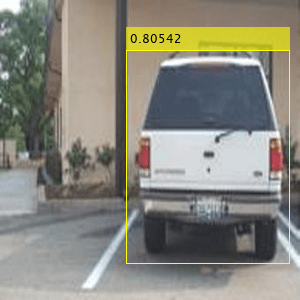Computer Vision
Erweitern von Deep-Learning-Workflows mit Computer Vision-Anwendungen
Wenden Sie Deep Learning bei Computer Vision-Anwendungen, indem Sie die Deep Learning Toolbox™ zusammen mit der Computer Vision Toolbox™ verwenden.
Apps
| Image Labeler | Label images for computer vision applications |
| Video Labeler | Label video for computer vision applications |
Funktionen
Themen
Bildklassifizierung
- Train Vision Transformer Network for Image Classification
This example shows how to fine-tune a pretrained vision transformer (ViT) neural network to perform classification on a new collection of images.
Objekterkennung und Instanzensegmentierung
- Get Started with Object Detection Using Deep Learning (Computer Vision Toolbox)
Perform object detection using deep learning neural networks such as YOLOX, YOLO v4, and SSD. - Get Started with Instance Segmentation Using Deep Learning (Computer Vision Toolbox)
Segment objects using an instance segmentation model such as SOLOv2 or Mask R-CNN. - Choose an Object Detector (Computer Vision Toolbox)
Compare object detection deep learning models, such as YOLOX, YOLO v4, RTMDet, and SSD. - Augment Bounding Boxes for Object Detection
This example shows how to perform common kinds of image and bounding box augmentation as part of object detection workflows. - Import Pretrained ONNX YOLO v2 Object Detector
This example shows how to import a pretrained ONNX™ (Open Neural Network Exchange) you only look once (YOLO) v2 [1] object detection network and use the network to detect objects. - Export YOLO v2 Object Detector to ONNX
This example shows how to export a YOLO v2 object detection network to ONNX™ (Open Neural Network Exchange) model format. - Deploy Object Detection Model as Microservice (MATLAB Compiler SDK)
Use a microservice to detect objects in images.
Automatisierte Sichtprüfung
- Getting Started with Anomaly Detection Using Deep Learning (Computer Vision Toolbox)
Anomaly detection using deep learning is an increasingly popular approach to automating visual inspection tasks.
Semantische Segmentierung
- Get Started with Semantic Segmentation Using Deep Learning (Computer Vision Toolbox)
Segment objects by class using deep learning networks such as U-Net and DeepLab v3+. - Augment Pixel Labels for Semantic Segmentation
This example shows how to perform common kinds of image and pixel label augmentation as part of semantic segmentation workflows. - Semantic Segmentation Using Dilated Convolutions
This example shows how to train a semantic segmentation network using dilated convolutions. - 3-D Brain Tumor Segmentation Using Deep Learning
This example shows how to perform semantic segmentation of brain tumors from 3-D medical images. - Explore Semantic Segmentation Network Using Grad-CAM
This example shows how to explore the predictions of a pretrained semantic segmentation network using Grad-CAM. - Generate Adversarial Examples for Semantic Segmentation (Computer Vision Toolbox)
Generate adversarial examples for a semantic segmentation network using the basic iterative method (BIM). - Prune and Quantize Semantic Segmentation Network
Reduce the memory footprint of a semantic segmentation network and speed-up inference by compressing the network using pruning and quantization.
Videoklassifizierung
- Activity Recognition from Video and Optical Flow Data Using Deep Learning
This example first shows how to perform activity recognition using a pretrained Inflated 3-D (I3D) two-stream convolutional neural network based video classifier and then shows how to use transfer learning to train such a video classifier using RGB and optical flow data from videos [1]. - Gesture Recognition using Videos and Deep Learning
Perform gesture recognition using a pretrained SlowFast video classifier.














